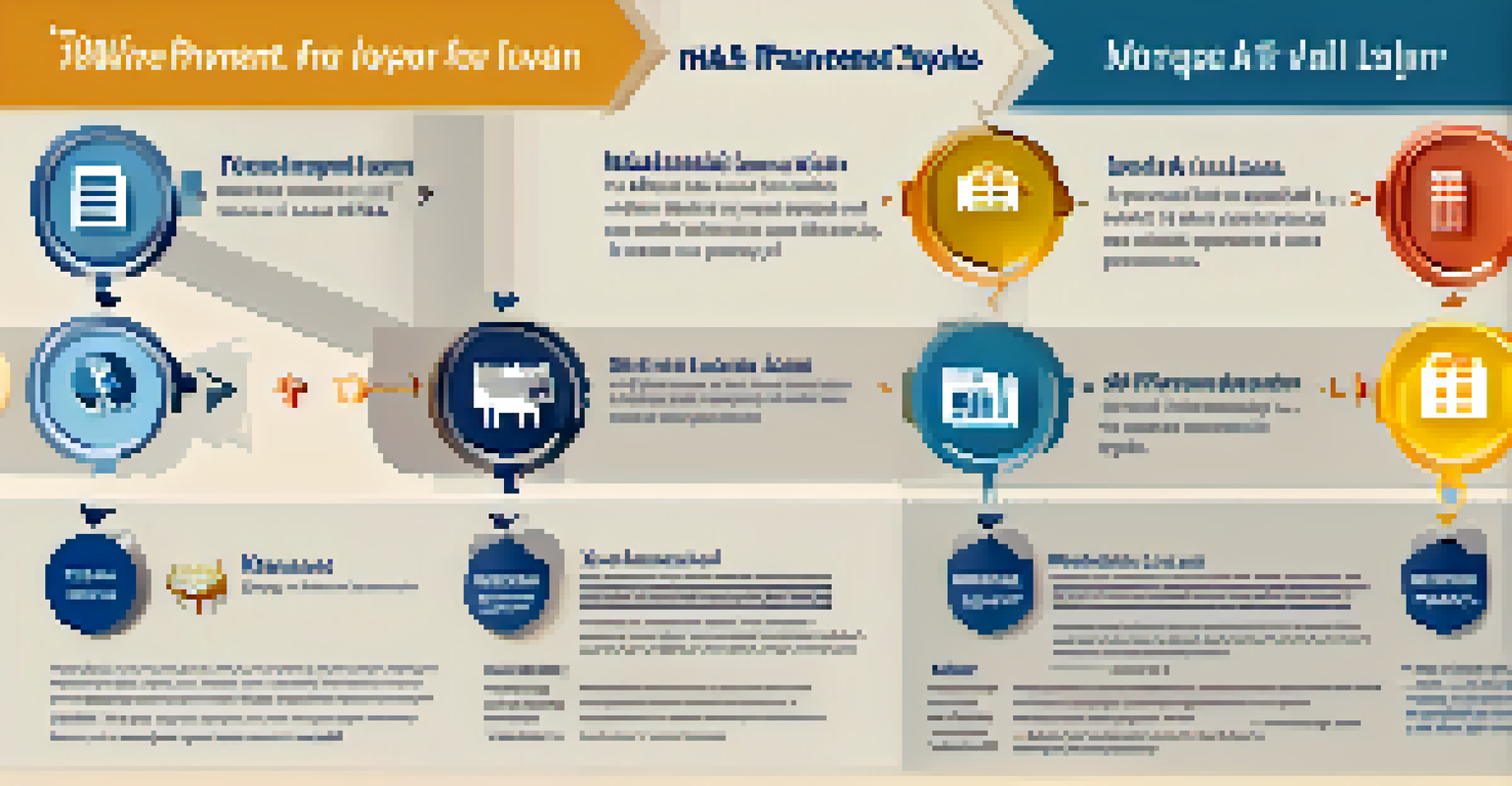Understanding the Differences Between FHA and Conventional Loans

What are FHA Loans and How Do They Work?
FHA loans, or Federal Housing Administration loans, are designed to help lower-income and first-time homebuyers. They allow for lower down payments and easier credit requirements compared to traditional loans. This makes FHA loans an attractive option for those who may not qualify for conventional financing.
Homeownership is the cornerstone of a strong community.
One of the standout features of FHA loans is the ability to put down as little as 3.5% of the home's purchase price. This is significantly lower than the typical 20% down payment required for conventional loans. This lower barrier to entry can make homeownership more accessible for many.
However, it's important to note that FHA loans come with mortgage insurance premiums (MIP), which can add to your monthly payments. This insurance protects the lender in case of default. While it helps more people buy homes, it’s a cost that borrowers need to factor into their budgets.
Understanding Conventional Loans: A Quick Overview
Conventional loans are not backed by the government, making them a bit different from FHA loans. They can be conforming—meeting the guidelines set by Fannie Mae and Freddie Mac—or non-conforming, which means they don’t fit those standards. This flexibility can attract a wider range of borrowers.

Typically, conventional loans require a higher credit score and a larger down payment—often around 20% to avoid private mortgage insurance (PMI). However, some lenders offer options with as little as 3% down for qualified buyers. This can provide some flexibility for those who are financially prepared.
FHA Loans Ease Homeownership
FHA loans require lower down payments and have more lenient credit requirements, making them accessible for first-time and low-income buyers.
Since conventional loans are considered less risky for lenders, they often come with lower interest rates compared to FHA loans for borrowers with excellent credit. This can make a significant difference in the total cost of the loan over time, making it an appealing choice for financially stable buyers.
Key Differences in Down Payment Requirements
One of the most striking differences between FHA and conventional loans is the down payment requirement. FHA loans allow for a down payment as low as 3.5%, making them ideal for first-time homebuyers or those with limited savings. This lower requirement can open the door to homeownership for many individuals.
The best time to buy a home is always five years ago.
In contrast, conventional loans typically require a down payment of 5% to 20%. While some lenders may offer programs with lower down payments, the general expectation is higher than that of FHA loans. This difference can significantly impact the initial costs of purchasing a home.
Potential homebuyers should carefully consider their financial situation and how much they can afford to put down. If coming up with a large down payment is a challenge, an FHA loan might be the better option, whereas those with more savings may find conventional loans more appealing.
Credit Score Requirements: FHA vs. Conventional
Credit scores play a crucial role in securing a mortgage, and there's a notable difference between FHA and conventional loans in this regard. FHA loans have more lenient credit score requirements, often allowing scores as low as 580 for a 3.5% down payment. This can be a game-changer for buyers with less-than-perfect credit.
On the flip side, conventional loans typically require a higher credit score, often around 620 or above. This can make it harder for some buyers to qualify, especially those who might be coming out of financial difficulties. Higher credit scores can also lead to better interest rates, further influencing the cost of the loan.
Conventional Loans Offer Flexibility
Conventional loans can provide lower interest rates for those with good credit and larger down payments, appealing to financially stable buyers.
Understanding your credit score and working to improve it can be beneficial, regardless of the type of loan you pursue. For those who may be struggling with credit issues, FHA loans offer a pathway to homeownership that might not be available through conventional financing.
Mortgage Insurance: How It Differs Between Loan Types
Mortgage insurance is a critical factor to consider when examining FHA and conventional loans. With FHA loans, borrowers are required to pay both an upfront mortgage insurance premium (UFMIP) and an annual premium (MIP). This means that even with a low down payment, buyers need to budget for these additional costs.
Conversely, conventional loans only require private mortgage insurance (PMI) if the down payment is less than 20%. Once the borrower reaches 20% equity in the home, they can typically request to have the PMI removed. This could potentially save borrowers a significant amount of money over time.
Understanding the implications of mortgage insurance is vital for budgeting and long-term financial planning. While FHA loans may offer more accessible options, the ongoing costs of mortgage insurance can add up, making it essential to weigh these factors when deciding on a loan type.
Loan Limits: What You Need to Know
Both FHA and conventional loans come with limits on how much you can borrow, but these limits differ significantly. FHA loans have set limits that vary by county, which can affect your purchasing power depending on where you want to buy. These limits are designed to ensure that FHA loans remain accessible in various housing markets.
In contrast, conventional loan limits are also determined by the county but can go higher, especially for conforming loans. For areas where housing prices are higher, conventional loans can offer more flexibility in terms of borrowing limits, allowing buyers to secure larger loans.
Mortgage Insurance Impacts Costs
FHA loans incur upfront and annual mortgage insurance premiums, while conventional loans require private mortgage insurance only if the down payment is below 20%.
When considering your options, it's essential to be aware of these limits. If you're looking to buy in a high-cost area, conventional loans may provide you with the necessary financing options that an FHA loan might not.
Which Loan is Right for You? Factors to Consider
Deciding between an FHA loan and a conventional loan ultimately depends on your unique financial situation and homeownership goals. If you have a lower credit score or limited savings for a down payment, an FHA loan may be your best bet. It offers more lenient qualifications and lower upfront costs, making it a viable option for many.
On the other hand, if you have a higher credit score and can afford a larger down payment, a conventional loan might serve you better in the long run. With potentially lower interest rates and the ability to eliminate mortgage insurance, conventional loans can be more cost-effective for eligible buyers.

Taking time to evaluate your financial readiness, credit score, and homeownership plans can help you make an informed decision. Consulting with a mortgage professional can also provide tailored advice that aligns with your goals, ensuring you choose the loan that best fits your needs.